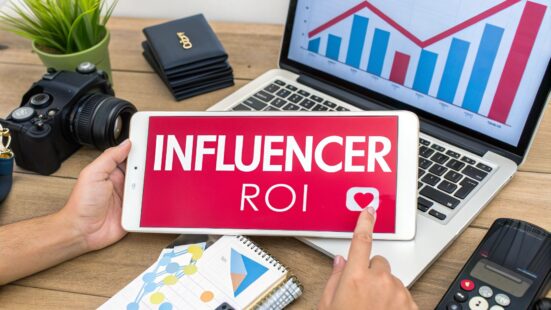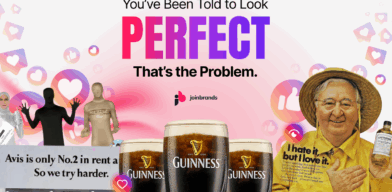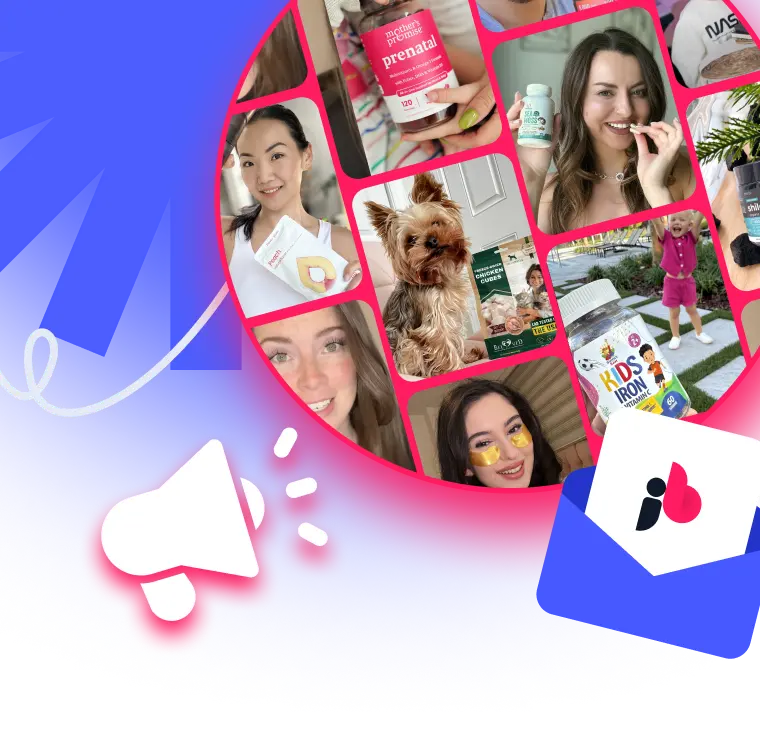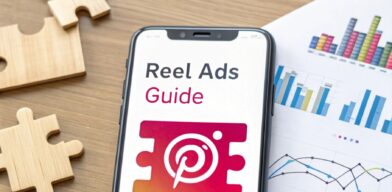 Mastering IG Reel Ads A Complete Guide
Mastering IG Reel Ads A Complete Guide
Table of Contents
Decoding Influencer Marketing ROI: Beyond the Basics

Calculating the return on investment (ROI) for influencer marketing involves more than simply tallying likes and shares. It’s about understanding the real impact of these campaigns on your business’s bottom line. This requires looking past superficial metrics and diving deeper into how influencer marketing affects each stage of the customer journey.
Instead of fixating on follower counts, businesses should focus on how influencer activity translates into tangible results. Think website visits, leads generated, and ultimately, sales. This shift in perspective requires a more sophisticated approach to measurement.
This means understanding how influencer content contributes to building a strong brand, increasing customer engagement, and fostering long-term loyalty.
Moving Past Vanity Metrics
Many brands are drawn to impressive-sounding numbers like reach and impressions. However, these surface-level metrics don’t always provide a complete picture of a campaign’s effectiveness. A large reach is useless if it doesn’t connect with the right target audience.
Brands need to focus on identifying and tracking metrics that directly correlate with their specific business goals. Furthermore, it’s important to remember that the ROI from influencer marketing isn’t always instantaneous.
Building brand awareness and nurturing customer loyalty are long-term strategies. Businesses must consider the cumulative impact of influencer campaigns over an extended period.
Measuring What Matters
So, what should you be measuring? Focus on business-driving outcomes such as:
- Conversions: Track how many sales or leads can be directly linked to your influencer campaigns. Tools like unique discount codes or dedicated landing pages can help isolate and measure these conversions effectively.
- Website Traffic: Monitor website visits originating from influencer content. This data provides valuable insights into how well influencers are driving traffic to your online platforms.
- Engagement: Analyze comments, shares, and other interactions to gauge how audiences are responding to influencer content. This helps determine the level of resonance and potential for ongoing engagement.
- Brand Lift: Measure changes in brand awareness, perception, and consumer sentiment. Consider using surveys or social listening tools to gather these insights. This data can help you assess the long-term impact of influencer partnerships on your brand equity.
The influencer marketing landscape is continuously evolving, and its importance is undeniable. Influencer marketing is predicted to be a $32.55 billion market by 2025. Over 80% of marketers already acknowledge its effectiveness.
This underscores the need for a strategic approach, especially when it comes to long-term partnerships, which are now being prioritized by about 47% of marketers. This shift towards longer-term collaborations demonstrates a deeper understanding of influencer marketing’s potential to cultivate lasting brand loyalty, not just drive immediate sales. More detailed statistics are available in the Influencer Marketing Benchmark Report. By implementing these strategies, brands can fully realize the potential of influencer marketing and achieve substantial returns on their investment.
Platform Intelligence: Where Your Influencer Budget Performs Best
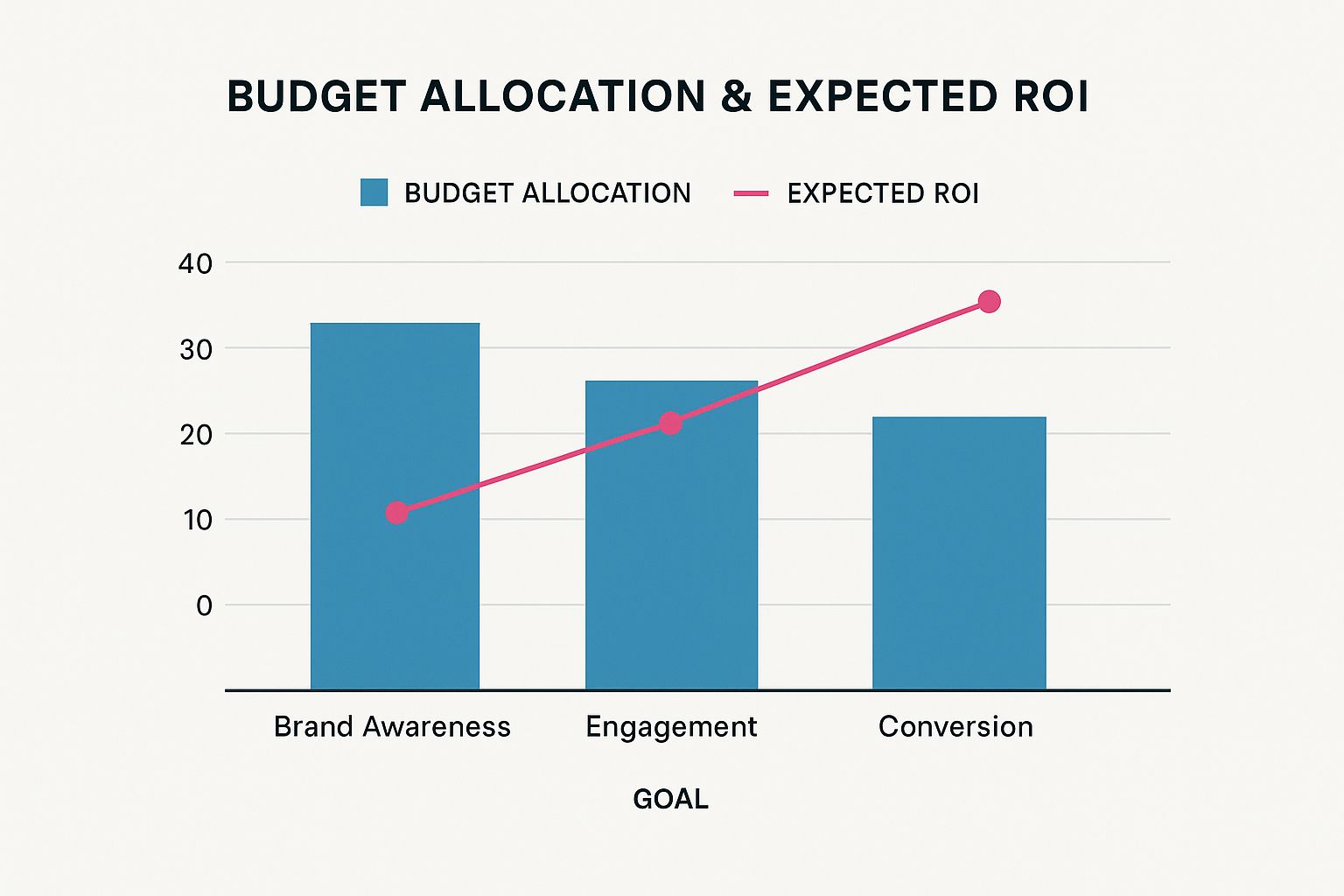
The infographic above illustrates how budget allocation connects with expected ROI across different campaign goals. These goals include brand awareness, engagement, and conversion. While brand awareness campaigns might take a large chunk of your budget, conversion-focused campaigns often deliver the highest ROI. This underscores the importance of choosing platforms that match your campaign objectives.
Picking the right platform for your influencer marketing is key to maximizing ROI. Each platform has its own strengths and weaknesses. Understanding these nuances can make or break your campaign. For example, Instagram remains a powerhouse for visual brands, boasting high engagement rates for product showcases and lifestyle content.
However, TikTok has quickly become a major player, particularly for reaching younger audiences and sparking viral trends. YouTube offers a different advantage, allowing for in-depth product reviews and tutorials that build brand affinity and drive purchase intent.
Matching Platforms to Objectives
This doesn’t imply that some platforms are inherently superior. The key is to select the platform that best aligns with your goals. If brand awareness is your primary objective, Instagram and TikTok, with their broad reach and viral potential, are strong contenders. If driving conversions is the priority, YouTube and even niche blog networks can be more effective, as they allow for detailed product demonstrations and reviews.
For instance, a fashion brand targeting Gen Z might find TikTok most effective, given its popularity with this demographic. However, the same brand might leverage Instagram for influencer partnerships centered on user-generated content and lifestyle imagery. Influencer marketing ROI has been a key focus for many brands, and platforms like Instagram have seen significant success.
By 2025, brands are projected to see an average return of $4.12 for every dollar spent on Instagram influencer campaigns. This impressive ROI underscores Instagram’s power to drive engagement and convert followers into customers. For deeper insights into influencer marketing ROI, check out these statistics: Learn more about influencer marketing ROI
To help visualize the potential ROI and best uses for each platform, let’s examine a comparison table:
Platform ROI Comparison for Influencer Marketing
This table compares the average ROI, engagement rates, and best-suited campaign types across major social media platforms.
| Platform | Average ROI | Engagement Rate | Best Campaign Types | Ideal Content Format |
|---|---|---|---|---|
| High (e.g., $4.12 per $1 spent) | High | Brand Awareness, Product Launches, User-Generated Content | High-quality images and videos, Stories, Reels | |
| TikTok | Variable, potential for viral reach | Very High | Brand Awareness, Viral Challenges, Reaching Younger Demographics | Short-form videos, creative effects, trending audio |
| YouTube | Moderate to High | Moderate | Conversions, Product Reviews, Tutorials, Long-term Brand Building | Long-form videos, in-depth content, product demonstrations |
| Moderate | Moderate | B2B Lead Generation, Thought Leadership, Brand Credibility | Articles, professional networking, industry insights |
As you can see, each platform caters to different marketing objectives and content formats. Understanding these nuances allows for a more strategic approach to influencer marketing.
Emerging Platforms and Unexpected Success
While established platforms remain crucial, keeping an eye on emerging platforms is essential. These platforms offer access to new audiences and unique engagement opportunities. Sometimes, unexpected platforms can deliver exceptional results. A B2B software company, for example, might find surprising success partnering with influencers on LinkedIn, where they can leverage thought leadership to build credibility and generate leads.
Optimizing for Each Platform
Finally, remember that every platform is unique. Optimizing your content for each platform is crucial for maximizing ROI. Consider video length, caption style, and the use of relevant hashtags. Short, engaging videos perform well on TikTok, while longer, more in-depth videos are favored on YouTube. Understanding these nuances allows you to tailor your content and maximize the impact of your influencer partnerships. Aligning your content with each platform’s best practices ensures effective audience reach and drives desired results. Choosing the right platform is just the first step. Ensuring your content thrives within that environment is next.
The Partner Selection Matrix: Finding Creators Who Deliver

Choosing the right influencers is crucial for a successful influencer marketing campaign. It’s about more than just a large follower count. In fact, audience quality often trumps sheer size when it comes to driving real results. This section explores practical techniques for selecting influencers who deliver, going beyond vanity metrics.
Beyond Follower Count: Assessing Audience Quality
A huge audience might look impressive, but it’s pointless if they aren’t interested in what you offer. Audience quality, meaning how well the influencer’s audience aligns with your target market, is paramount.
For example, a beauty brand targeting Gen Z might partner with a micro-influencer with a smaller, dedicated following of beauty enthusiasts rather than a celebrity with millions of diverse followers. This focused approach frequently yields higher conversion rates and a better return on investment.
Examining an influencer’s past partnerships offers valuable insights. Seeing the brands they’ve collaborated with can indicate their audience’s receptiveness to similar products. This research can save time and money by focusing your selection on influencers whose audiences are primed to engage with your brand. One key statistic highlights the impact of a strong following: brands see a 9.2% higher return when working with influencers who have a larger, engaged audience. This underscores the importance of follower count in driving successful campaigns. For more detailed statistics, check out this resource: Learn more about influencer marketing ROI statistics.
Evaluating Content Resonance and Audience Trust
An influencer’s content needs to resonate with their audience and align with your brand. Look for influencers whose content naturally reflects your brand values and messaging. Content resonance creates a synergy, making the partnership feel authentic.
Audience trust is also key. Influencers who have nurtured genuine relationships with their followers have a greater ability to influence their purchasing decisions. This organic trust translates into more effective campaigns.
Micro-Influencers vs. Celebrities: Understanding the Trade-offs
Celebrity partnerships generate buzz, but they don’t always offer the best ROI. Micro-influencers, with their smaller, highly engaged audiences, can often outperform celebrities in terms of conversion rates. This is because they typically have a deeper connection with their followers, fostering trust and influence.
This means considering your campaign goals carefully. Do you want broad brand awareness or focused conversions? The answer will often guide you toward the right influencer tier.
Practical Frameworks for Evaluating Cost-Effectiveness
Creating a framework to assess cost-effectiveness across different influencer tiers is essential. This framework should factor in metrics like cost per engagement (CPE) and cost per conversion (CPC), as well as the overall potential ROI.
By analyzing these metrics, you can pinpoint the most cost-effective partnerships and optimize your budget allocation. This strategic approach ensures you maximize returns without overspending. Effective influencer selection is about strategic alignment, not just big names. By focusing on audience quality, content resonance, audience trust, and cost-effectiveness, you can find creators who truly deliver.
The Measurement Playbook: Tracking What Actually Matters
Connecting influencer activities to concrete business outcomes is critical for demonstrating the value of your influencer marketing ROI. This requires moving beyond simple vanity metrics like follower counts and likes, and implementing more robust tracking mechanisms. Leading brands are adopting advanced attribution models that account for both immediate sales and the long-term benefits of influencer partnerships.
Building a Measurement Framework Aligned With Your Objectives
Start by defining what success looks like for your campaigns. Are you primarily focused on driving sales, increasing brand awareness, or boosting website traffic? Your chosen key performance indicators (KPIs) will shape your measurement framework.
For example, if your goal is to increase sales, you’ll want to track conversions directly attributed to influencer content. However, if your objective is brand awareness, measuring changes in brand sentiment and reach becomes more important. Clearly defined objectives are the cornerstone of effective measurement.
Why Traditional Tracking Methods Fall Short
Many traditional tracking methods fail to capture the full impact of influencer marketing. Relying solely on platform-native analytics, like those provided by Instagram and YouTube, often provides an incomplete picture, overlooking the influence that extends beyond a single platform.
Additionally, last-click attribution, which credits the final click before a conversion, ignores the influence of earlier touchpoints. This includes influencer content that may have initially introduced the customer to your brand. This often leads to an underestimation of the true value of influencer marketing.
Proven Solutions for Accurate Attribution
Several methods provide more accurate attribution. UTM parameters, added to the end of URLs, allow you to track traffic sources effectively. This helps determine which influencers are driving the most valuable traffic to your website, providing granular data on the source, medium, and campaign that led to a specific conversion.
Custom discount codes, unique to each influencer, offer a straightforward way to track sales directly linked to their promotions. This direct connection between code usage and sales helps quantify the influencer’s impact on revenue, providing both the influencer and the brand with clear data on campaign effectiveness.
Pixel tracking provides deeper insights into user behavior on your website after they click through from influencer content. This helps understand how users interact with your site and identify areas for optimization, allowing you to track conversions and attribute them back to specific influencer campaigns.
Implementing Tracking Tools and Integrating Data
Leveraging platform-specific analytics tools, such as those offered by Instagram and YouTube, provides valuable insights into engagement and reach within those platforms. This data can be combined with other tracking methods for a comprehensive view of campaign performance. These tools often provide detailed demographic and engagement metrics.
Integrating influencer data with your broader marketing analytics platform gives you a holistic view of your marketing performance. This unified view allows for a more informed assessment of the effectiveness of your various marketing channels, including influencer marketing. Combining this data paints a comprehensive picture of your marketing ecosystem.
By using a mix of these strategies—UTM parameters, custom discount codes, pixel tracking, and platform analytics—you can gain a clearer picture of your influencer marketing ROI. This accurate attribution allows for better optimization of future campaigns, ensuring a data-driven approach to maximizing your influencer marketing investments.
Campaign Architecture: Designing for Maximum Returns
The structure of your influencer marketing campaigns directly impacts their effectiveness and your overall ROI. A well-structured campaign can deliver consistent results and scale alongside your brand’s growth. Let’s explore how successful brands build campaigns that create lasting value.
Structuring Campaigns for Compounding Value
Some campaigns generate initial excitement but quickly lose momentum. Others are designed for continuous growth. This difference often comes down to the core campaign structure.
Long-term partnerships, for instance, cultivate deeper relationships with influencers and their audiences. This increased trust translates to stronger, more consistent results over time. While one-off campaigns can be useful for specific promotions, they often lack the compounding benefits of ongoing collaborations. This long-term approach fosters a valuable network effect, organically amplifying your brand’s message and reach.
To maximize ROI, consider the services of an AI Digital Marketing Consulting Agency. They can be valuable partners in developing impactful strategies and ensuring effective execution.
Creating Effective Content Briefs
Content briefs are essential blueprints for your influencer campaigns. They guide creators while ensuring alignment with your brand’s objectives. A strong brief balances creative freedom with strategic direction. Here are some key elements:
- Clearly defined objectives: What are you aiming to achieve? Whether it’s increased brand awareness or more website traffic, clearly outline your goals from the outset.
- Target audience insights: Equip influencers with detailed information about your target audience. This helps them tailor content that truly resonates.
- Key messaging: Define the core messages you want to communicate. This ensures consistent branding across different influencer channels.
- Creative freedom: Allow influencers to incorporate their unique style and creativity. This authenticity is key to engaging their audience.
This approach yields content that feels both genuine and strategically aligned, maximizing audience engagement and driving results.
Aligning Compensation With ROI Goals
How you compensate influencers directly impacts their motivation and your ROI. Traditional flat-fee structures may not always align incentives effectively.
Consider performance-based compensation, where part of the influencer’s payment is tied to specific outcomes like sales or leads. Hybrid models, combining a base fee with performance bonuses, are another effective option. These models encourage influencers to focus on delivering measurable business results. This structured compensation fosters a collaborative environment focused on mutual success.
Let’s look at how these elements combine to impact ROI. The table below illustrates how different campaign structures can influence key metrics.
To illustrate this further, let’s examine the impact of campaign structure on key performance indicators. The following table shows how different approaches can affect your influencer marketing ROI.
Campaign Structure Impact on Influencer Marketing ROI: This table highlights how different campaign approaches affect key performance metrics and overall return on investment
| Campaign Structure | Average ROI | Content Authenticity | Audience Engagement | Brand Control | Resource Requirements |
|---|---|---|---|---|---|
| One-off Campaigns | Lower | Can Vary | Often Short-Term | Higher | Lower |
| Long-Term Partnerships | Higher | Typically Higher | Long-Term Growth | Shared | Moderate |
| Performance-Based Campaigns | Variable, Potentially High | Dependent on Influencer | Driven by Results | Moderate | Moderate to High |
As you can see, long-term partnerships often lead to higher ROI, increased authenticity, and sustained audience engagement. While one-off campaigns require fewer resources, they typically generate lower ROI and less sustained engagement. Performance-based campaigns can offer high ROI but require careful management and tracking.
Building a Successful Campaign Framework
By focusing on long-term partnerships, crafting detailed briefs, and aligning compensation with ROI goals, you can maximize your influencer marketing success. A strong framework ensures consistent returns and builds lasting value for your brand. This strategic approach sets the stage for sustained growth in the competitive influencer marketing landscape.
Tech-Enabled Optimization: Tools That Amplify Returns

Beyond managing influencers, technology is reshaping how we achieve ROI in influencer marketing. AI-powered tools are enhancing partner discovery, content promotion, and performance optimization. This section explores how these technologies genuinely elevate ROI, concentrating on tools that deliver tangible value, not unnecessary complexity.
Predictive Analytics: Identifying High-Potential Partnerships
Imagine knowing which partnerships will flourish before a campaign even launches. Predictive analytics makes this a reality. By examining historical data, these tools pinpoint influencers whose audiences offer the greatest conversion potential. This empowers brands to allocate budget strategically, prioritizing partnerships poised for the highest return.
This data-centric strategy minimizes the risk of unproductive partnerships, maximizing the impact of each dollar. It’s about informed decisions fueled by data, not speculation.
Automated Optimization: Refining Performance in Real-Time
Automated optimization systems elevate campaign management. These tools continuously track campaign performance, making real-time adjustments for optimal results. Consider it autopilot for your influencer marketing. The system identifies and implements improvements automatically, conserving your time and resources.
For instance, if a particular piece of influencer content underperforms, the system might automatically shift budget towards higher-performing content. This ongoing optimization ensures maximum returns from your campaigns. This adaptable approach allows for quick responses to market fluctuations and audience behavior changes. To further enhance ROI, consider leveraging existing content through established content repurposing strategies. This can substantially expand the reach and influence of your campaigns.
Content Amplification: Extending Reach Beyond Organic Audiences
Organic reach is important, but sometimes wider exposure is necessary. Content amplification technologies extend the visibility of influencer content beyond their current followers. This is achieved through various methods, including paid social media promotion and specialized influencer marketing platforms.
This broader reach increases brand awareness and drives conversions. Amplifying high-performing content maximizes its impact on a larger target audience. This is particularly valuable for product launches and time-sensitive promotions.
Integrating Tech Solutions Into Your Workflow
Integrating these technologies doesn’t necessitate a complete process overhaul. Many tools seamlessly integrate with existing influencer marketing platforms and workflows.
Begin by identifying your key challenges. Is it difficult to find the right influencers? Is too much time spent on manual optimization? Select tools that address those specific issues. A phased implementation is often more effective than adopting multiple new tools simultaneously.
Key Benefits of Tech-Enabled Optimization:
- Improved ROI: By optimizing every phase of influencer marketing, these tools deliver stronger returns.
- Time Savings: Automation frees up your team for strategic initiatives and creative development.
- Data-Driven Insights: Gain a deeper understanding of your audience and campaign performance.
- Increased Efficiency: Streamlined campaign management simplifies workflows.
- Competitive Advantage: Stay ahead by embracing the latest technological advancements.
By strategically incorporating these tools, you can streamline workflows, obtain deeper insights, and ultimately boost your influencer marketing ROI. This tech-focused strategy empowers data-driven decisions and maximizes campaign impact.
Ready to harness the potential of tech-enabled influencer marketing? JoinBrands offers a comprehensive platform to connect with top creators, manage campaigns, and maximize your ROI. Visit JoinBrands today to learn more.
